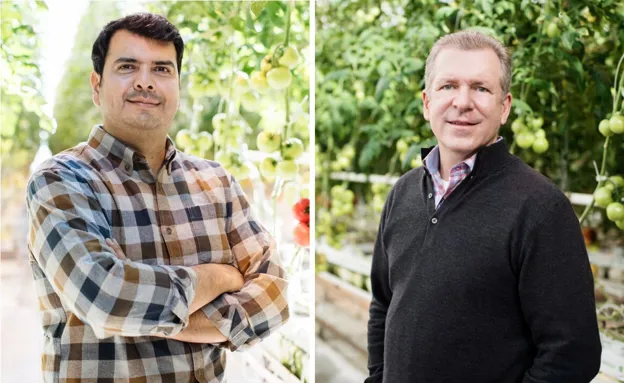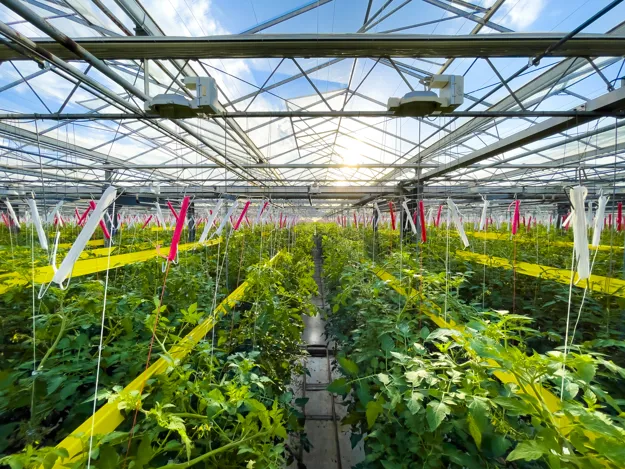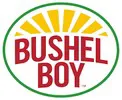Although Bushel Boy Farms operated for decades in the tomato sector, the assortment of the US greenhouse company has expanded in recent years to include strawberries and cucumbers. And there is more to come, says President Chuck Tryon. "Our brand can stretch over different produce categories: for the consumer, it represents produce safely grown in the Midwest." In order to operate successfully, efficiency in production is key as well. Head grower Roberto Ramirez explains how the company addresses challenges in the areas of labor, shrinking margins, and rising energy prices through the implementation of new technologies.

Consolidations
The North American greenhouse industry has faced increased pressure and tighter margins in recent years, influenced by factors like high-interest rates, labor and energy expenses, and inflation. “We primarily sell through retail channels, not much through food service. When inflation hits, US consumers start to go out to restaurants less and shop in grocery stores more, which is positive for our business,” Chuck says.
Despite many acquisitions characterizing the US greenhouse market currently, Bushel Boy, owned by US malt company Rahr Corporation and operating farms in Minnesota and Iowa, continues to operate independently. “There’s certainly consolidation happening in the marketplace, but at Bushel Boy, we’re not the new kid on the block. We’ve been in business for a little over thirty years and have seen the cycles go through. Consolidation is happening and will have an impact on the industry, but our business found its way. And we see the demand for these types of products continuing to increase, which is positive. Among consumers, there’s a growing interest in knowing where their food comes from. They’re looking for fresh, year-round grown products from nearby their region, which can be difficult in colder climates like we’re in. I firmly believe this interest will continue to grow: whether it’s from a health standpoint or a sustainability standpoint. For us, it’s making sure we have the right business model in place, with the right economics to be profitable."

Modern techniques
Remaining profitable in this industry means keeping a close eye on expenses. “We have to tighten everything,” Roberto confirms. “Energy and labor are our two most costly crop inputs. We need to tighten these really well and execute to make our margins.”
Bushel Boy has been known to apply modern greenhouse techniques throughout the company’s lifespan: growing hydroponically, using rainwater, and filtering and redirecting their CO2 emissions so no CO2 is released into the atmosphere. As is in their DNA, the company looks into applying technologies to help them address new sustainability challenges. Close collaboration with suppliers is key in this. Bushel Boys is currently investing in their Owatonna, Minn. and Mason City, Iowa facilities, upgrading the lighting and packaging technologies. “We requested proposals to improve our lighting systems, enabling us to find savings in energy. Finding the right system and how to achieve this is something we could do thanks to our collaboration with Hort Americas and GE Current. They are easy to talk with, knowledgeable and work closely with us to see how they can help.”
AI
“Another technological improvement we’re excited about is piloting a visioning and remote crop monitoring system with IUNU, bringing in the help of AI to our daily crop work. Previously, within the greenhouse, we monitored and adjusted crop growth based on data that was recorded last week – which means it’s always a lagging indicator when you try to look at what’s ahead of you. This new IUNU technology will allow our growers to have better insight into the different crops in the greenhouses: they will see things real-time and have much more complete data.”
Other technologies being evaluated include the BlueRadix greenhouse automation, and Ecoation plant forecasting and IPM monitoring solutions. Doesn’t all the information only make it harder? “Yes,” Roberto confirms. “But it’s good to have it. We’re differentiating what’s out there and what works for us. I believe there’s a degree of automation we can have in the greenhouse that will take a long time to implement. We’ll see automation technology like that aiding people to do a bit more, or make their jobs easier. It’s not a replacement of people: they are going to be key for agriculture as a whole,” he believes.
Packaging
Another part that has their attention is the post-harvest cycle, which is also why their packaging facilities are currently being upgraded. “There’s a big win to find in automating the process after the products leave the greenhouse.”
Packaging, in general, provides an important tool in the Bushel Boy business model, as their brand is of vital importance in their recognition among consumers. “It’s a way to differentiate in the stores, and a tool to add value to our products,” says Chuck.
As Bushel Boy also competes with competition from imported produce, finding the right market offering to bring added value is key. Over the last years, they expanded their offerings to include snacking tomatoes, strawberries, and, more recently, year-round cucumbers.
Answering the market demand
By now, the team has experienced good learnings in right sizing the type of cucumbers they want to grow – which of course goes hand in hand with the demand of Bushel Boy’s customers. The company now grows a combination of long English, mini and baby varieties, all on a high-wire production system. An example of bringing additional value can be found in the upcoming introduction of baby cucumbers in a bag, providing a different packaging format than what currently exists.
Yet, growing new crops remains a learning curve. Roberto himself grew cucumbers for different companies prior to joining Bushel Boy, and the team at Bushel Boy had great experience with tomatoes. “But to grow new crops remains different. The labor intensity of cucumbers made us go through challenges. Finding the crop’s needs and accommodating those can be hard to do. Now that we have a path, we can start looking into different varieties to find even better attributes, higher resistances, or varieties that are less intense on work, but produce the same, or even more, quantities.”
Addressing the demand of the market also means further diversification is in sight. “Our brand can stretch over different produce categories, and the consumers in our areas have agreed: Bushel Boys means safely grown produce grown in the Midwest, and we continue to look at additional crops we can bring in,” Chuck says. The company did some early work on soft fruits, which they see as a long-term route, and also did a test on mini sweet peppers, which Chuck reveals to be a crop they’ll likely expand into. “It offers us opportunities to differentiate, and it’s a product that can stand out in the market. Mini sweet peppers will be Bushel Boy’s most logical next addition.”
For more information:
Bushel Boy
www.bushelboy.com
